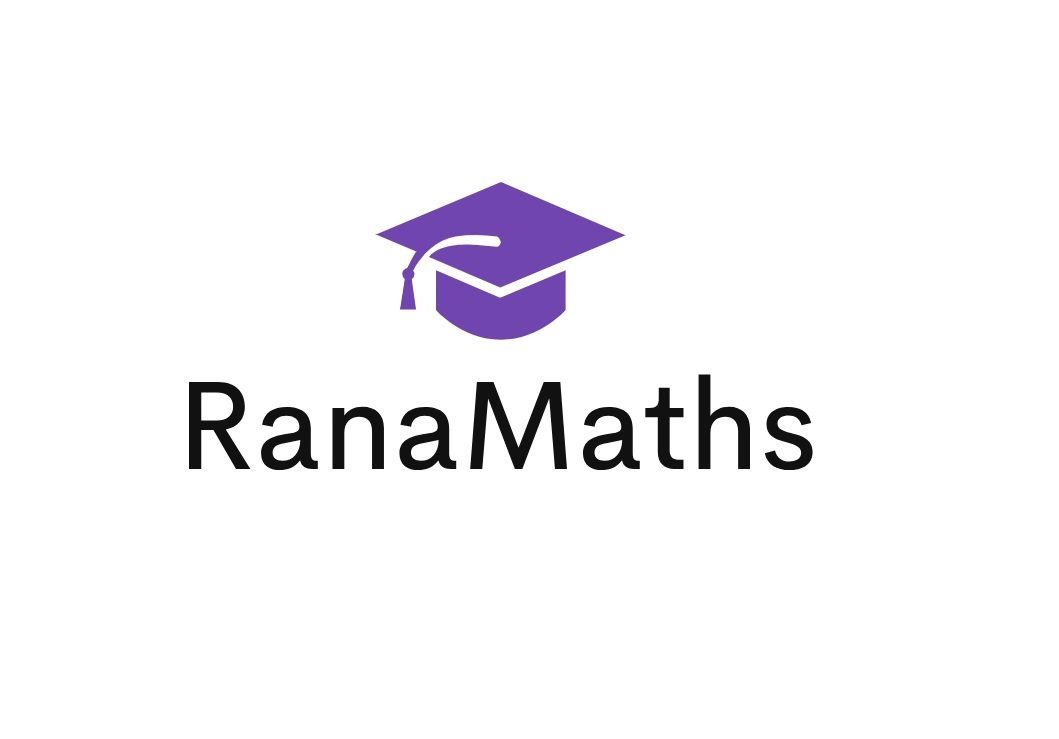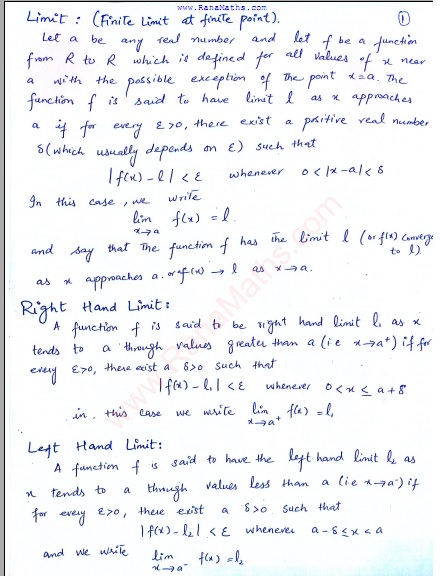Calculus and Analytical Geometry Lecture No. 3
In these notes, Calculus 1 at the undergraduate
We would like to extend our heartfelt gratitude to Ma’am Nabila Riaz for providing these useful notes. Ma’am Nabila Riaz is a very talented and energetic lecturer at the Federal Urdu University, Islamabad.
Limit:
The limit of a function describes the behavior of the function as the input approaches a particular value. If (f(x)) approaches a specific value (L) as (x) gets arbitrarily close to (c), then (\lim_{{x \to c}} f(x) = L).
Right-Hand Limit:
The right-hand limit of a function (f(x)) as (x) approaches (c) from the right side (denoted as (c^+)) is denoted as (\lim_{{x \to c^+}} f(x)). It describes the behavior of the function as (x) gets arbitrarily close to (c) from values greater than (c).
Left-Hand Limit:
The left-hand limit of a function (f(x)) as (x) approaches (c) from the left side (denoted as (c^- )) is denoted as (\lim_{{x \to c^-}} f(x)). It describes the behavior of the function as (x) gets arbitrarily close to (c) from values less than (c).
Sandwich (Squeeze) Theorem:
Also known as the Squeeze theorem, it states that if (g(x) \leq f(x) \leq h(x)) for all (x) in an open interval containing (c), except possibly at (c) itself, and (\lim_{{x \to c}} g(x) = \lim_{{x \to c}} h(x) = L), then (\lim_{{x \to c}} f(x) = L).
Limit of a Constant Function:
The limit of a constant function (f(x) = c) as (x) approaches any value (c) is simply the constant itself. Formally, (\lim_{{x \to c}} c = c).
Limit of the Sum of Two Functions:
If (\lim_{{x \to c}} f(x) = L_1) and (\lim_{{x \to c}} g(x) = L_2), then (\lim_{{x \to c}} (f(x) + g(x)) = L_1 + L_2).
Limit of the Quotient of Two Functions:
If (\lim_{{x \to c}} f(x) = L_1) and (\lim_{{x \to c}} g(x) = L_2) (where (L_2 \neq 0)), then (\lim_{{x \to c}} \frac{f(x)}{g(x)} = \frac{L_1}{L_2}).
Limit of the Product of Two Functions:
If (\lim_{{x \to c}} f(x) = L_1) and (\lim_{{x \to c}} g(x) = L_2), then (\lim_{{x \to c}} (f(x) \cdot g(x)) = L_1 \cdot L_2).
These concepts are fundamental to understanding the behavior of functions and evaluating limits in calculus.
We invite you to continue exploring our website at www.RanaMaths.com
Calculus and Analytical Geometry Lecture No. 3


I need to to thank you for this very good read!!
I definitely enjoyed every bit of it. I have you saved as a favorite to
look at new stuff you
Thank you for your support.
We will upload next lecture soon.
Keep visiting our website.